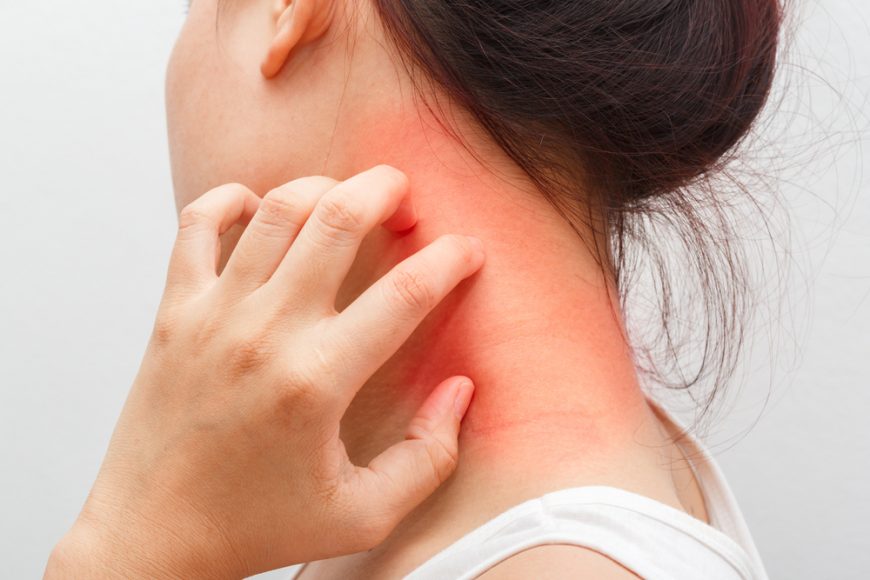
According to the American Academy of Dermatology, Atopic Dermatitis is a common skin disease in children and adults. Atopic Dermatitis has been given a few names, some of which may sound more familiar. Other names for Atopic Dermatitis include:
- Eczema (the name most people use)
- Dermatitis
- Atopic eczema
This skin disease is often characterized by very dry and itchy skin. If these areas on the skin are scratched, they will appear red and irritated, and infection can likely occur. These symptoms may come and go or there may be a persistent rash that, over time, could lead to tough and thicker skin areas. The American Academy of Dermatology, also states that Atopic Dermatitis appears differently in infants, children, and adults.
| Infants (Newborn- 2 years old) | Children (2 years old- puberty) | Adults |
| Rash that appears mostly on the scalp and face- especially on the cheeks (Rarely appears in diaper area) | Rash that appears mostly in the creases (I.e. elbows, knees) and also neck, wrists, and ankles. | Rash that appears in the creases of the elbows or knees and nape of the neck, and covers most of the body. |
| Signs of Atopic Dermatitis include trouble sleeping, rubbing against bedding or carpeting, or possibly skin infections. | Signs include the rash noted above, and itchy, scaly patches where the rash appeared. Thickened skin patches can itch even when Atopic Dermatitis is not flaring up. | Can be especially bad around the eyes, causes very dry, non-stop itchy skin. Also appears scalier in affected areas compared to infants and children. |
Around the world, between 10% to 20% of children are affected by Atopic Dermatitis, and about 1% to 3% of adults have Atopic Dermatitis. Anybody can get this disease, regardless of their skin pigmentation. Most of the people with atopic dermatitis are diagnosed before they are 5 years old (roughly 90% of people), and it is rare for atopic dermatitis to be initially diagnosed as an adult.
Some of the common factors that seem to increase a person’s likelihood of getting Atopic Dermatitis include:
- Family members that have Atopic Dermatitis, asthma, or hay fever
- Where someone lives (developed countries and colder climates are more at risk)
- Females are slightly more likely to develop Atopic Dermatitis
- The mother’s age at their child’s birth (If the mother gives birth later in life, the child is more likely to develop Atopic Dermatitis)
- Social Class (Atopic Dermatitis is more common in higher social classes)
Researchers are still studying what causes Atopic Dermatitis, but it is important to know that it is not contagious, and the disease usually runs in families. Across the country, there are multiple studies being conducted to aid in the treatment of Atopic Dermatitis, as well as to find out more about the disease in general.
If you are interested in joining a clinical trial, please contact us today!
ActivMed Website: https://activemedredev.wpengine.com/
ActivMed Phone: 603-319-8863
Authored by: Kendra Thibeault
Medically Reviewed by: Abel Jarell, MD
Sources:
American Academy of Dermatology
